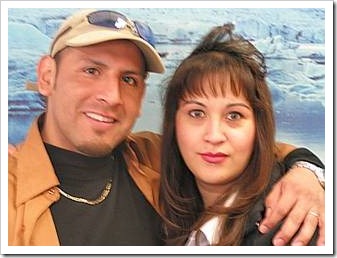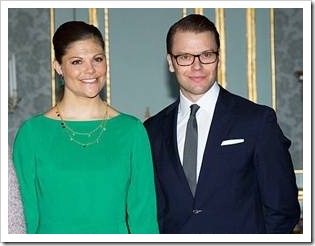
At the headquarters of National Semiconductor in Santa Clara, California, there was a sign posted on the wall of a corridor, which read
Doing no more than the average is what brings the average down
Let’s say 10 people do their best work digging holes. On average, they dig 5 holes a day, because 1 digs 7 holes, 2 dig 6 holes, 4 dig 5 holes, 2 dig 4 holes and 1 digs 3 holes.
On their second week of work, they are told about the group’s average performance. Those who dug more than 5 holes in the previous week feel like they gave more than the rest, so they all slow down and dig 5 holes each. So 7 people now dig 5 holes each, while the others continue as before.
The new average? 4.6 holes per person per day. So by doing no more than the (previous) average, a new average is created, which is lower, and this could continue until everybody digs 3 holes a day, like the slowest worker.
How is this related to the divorce rate?
In the past, divorce was unacceptable in many societies. Once people got married, which was often by parental arrangement, they were stuck with their partners for life. Marriage was literally “until death do us part”. Being married for life was what everybody did. The average divorce rate was 0%.

Now, when you try to make a marriage work and you are committed to it for the long haul, you make decisions accordingly. You join bank accounts, split the responsibilities for best household performance and comfort, do your best to get to know your partner and try to be accommodating. In return, you could also rely on your partner to be there for you in times of difficulty, simply because he or she was as committed to the marriage as you were.
But even before the marriage started, young people (or their parents) spent time considering “the right person”, the person they would commit the rest of their life to and that would commit theirs back to them. In every society, the values and preferred qualities were different, but still, there was more of an effort to make the best choice of partner.
At some point, perhaps because of exposure to other ways of life and alternative sets of beliefs, divorce became an option. At first, it was easier on the men, then it became easier on the women, but the floodgates were opened.
After that, the average started to crawl upwards. Knowing another person, maybe even a friend or a relative, who had divorced, gave unconscious permission to others to do the same. Celebrities’ divorces started to make the whole thing fashionable. Why, if so-and-so could get a divorce and remain beautiful, rich and famous, anybody could.
Of course, when you think of your marriage as a temporary arrangement, from which you can always “bale out”, your decisions are all different. You always have to cover yourself in the event of your marriage’s untimely demise.

But you also approach your partner in a more cautious way. On the surface, it may be presented as respect, but maybe there is more than a little bit of fear in it. Fear of causing a big enough fight, of losing the relationship, of losing the kids, the house, the comfort.
I know some people who live in “his house” or drive “her car”. Living in someone else’s house must feel like living on charity. It is not a good foundation for an equal relationship.
In “blended families”, people may even struggle with the question “Whose child is this?” If a man marries a woman with a 2-year-old child, at which point does he become the kids’ dad? Does he ever? What if he wants to tell the kid to go to bed at 11pm? Does he have the right?
And the more divorces, the more permission to divorce and the more divorces still. After all, “Everybody’s doing it”.
If this is not enough, divorces have created such a big market that dating sites provide a lot more than 50 ways to leave your lover. “Family” lawyers abound who will help you prepare such prenuptial agreements you will start suspecting your prospective partner before you even say, “I do”, and you will have that agreement on your mind in difficult times to help you calculate the benefits of breaking up the marriage.
Of course, with a strong “prenup”, you can jump into marriage with just about anyone, because you can always get out of it in a hurry too.
Kids? Nope, nothing in the prenup about them. Tough (for them, anyway).
Now, all of the above is my interpretation of how it works, but I can tell you there are people I know who demonstrate these differences in attitude so well, I feel it is about right.
Bottom line:
 Forget what everybody is doing and do the best you can in your own marriage
Forget what everybody is doing and do the best you can in your own marriage- If you are not married (again) yet, consider communication styles, love language, beliefs and values before joining hands (civil or religious, it does not matter)
- Imagine a full life with your partner, including having kids, moving, making money, losing money, having a mid-life crisis (one each), kids leaving home, retirement and old age (may we all get to that in peace), and be ready for them
- Commit yourself wholeheartedly to that one special person and decide to see your relationship as breakable only by death, and maybe not even that (who knows?). Make every decision within the marriage framework and make every decision count
- Share ownership of everything you own officially. In our modern times, this is one of the strongest ways to demonstrate your commitment – putting your money where your mouth is
- Invest in yourself as a person. It is much easier being together when you are happy
- Develop your relationship skills and invest in your partner and your marriage
- Children of divorced parents hurt for life. Remember your responsibility for your kids and always consider how your decisions affect them
- Keep an image of your partner from when you decided to tie your lives together. This can be a picture or anything else that reminds you how you felt about him or her. Use this image to strengthen your commitment and to help you notice these things in your partner every day
Just to clarify, “marriage” is any exclusive adult relationship that involves living together and sharing resources, especially when children are involved.
Happy marriage,
Gal
 Forget what everybody is doing and do the best you can in your own marriage
Forget what everybody is doing and do the best you can in your own marriage










